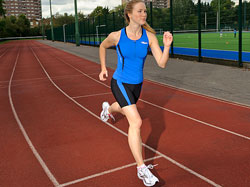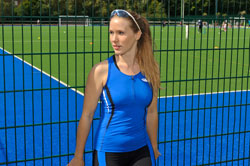What does Winter/Spring Triathlon Training involve?
Most races are open and filling fast, so it’s time to get to work, decide your goals, and get started on focused training.
 Goal Setting
Goal Setting
Step one: choosing a goal. Do you want to finish your first race? Go longer than last season? Improve your time over a certain course?
Be sure to pick a goal that is realistic, but challenging and exciting! Also be sure that it is specific with a time line. A good, time-specific goal might be: ‘I want to finish a standard-distance triathlon by August 2024’.
Once you’ve chosen your goal, write it down and post it somewhere where you can see it. It’s difficult to reach your goal if you don’t remember what it is! Seeing your goal each day will remind you of why you are training and will inspire you when you need a boost.
Choosing a Race
No matter how many races you’re planning for the season, it is key to choose one to two ‘A’ races. In other words, prioritize. Let’s stick with the example of finishing a standard-distance race in August (this will be your ‘A’ race). Your training should focus on building towards this race.
Is it okay to race shorter distances leading up to your ‘A’ race? Of course, but they should fit into your training plan, not detract from it. Schedule your test races prior to a recovery week so that you have time to recover properly without missing training days. Use your test races as just that- a test of your fitness, good transition practice, a chance to try out your nutrition for longer races and a fun workout.
 Base Training
Base Training
The winter and early spring months are time to start your base training. Base training is simply (and importantly) building the foundation you need to go the extra mile (endurance) and to eventually start training for speed. It may seem counterintuitive to go slow to get fast, but this is precisely what you need to do. It’s difficult for the body to train both its aerobic system and its anaerobic system at the same time, so by taking it slower, your body gets the chance to develop its aerobic system almost exclusively. That’s not to say you never incorporate any speed. Technique work is perfect in the build phase and can help you release that need for speed… try running strides, pedal speed/cadence drills, and running drills! Of course, it’s also important not to forget core strength. Take the time now to strengthen this important foundation as well!
Even though it sounds easy to take it easy, base training takes discipline. You may need to walk when you want to run or you may not be able to train with a friend who has different goals, but take the time to try it and you will see results.
Even with base training, it is important to schedule recovery weeks. Your body does its best work adapting when at rest.
Base training should last about 12-16 weeks before entering the build phase, depending on your fitness level and race goals. Be sure to count backwards from your ‘A’ race to determine the timeline of your race phases.
Build Phase
You’ve done your time in the saddle, worked on your running and swimming technique, and have built a strong aerobic base; it’s time for the build phase. During the build phase, the goal is smaller training volume at a higher intensity. Now is the time to bring in intervals- repeats in the pool, on the road or on the track that will sharpen your speed. Interval time or distance will vary based on your targeted race, but think shorter, faster sets. Keep up the core work, too- your body is only as strong as its foundation.
The build phase will typically last 4-8 weeks and will lead to a Peak Phase in the few weeks before your ‘A’ race.

